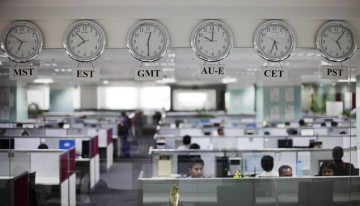 With the COVID-19 pandemic posing steep challenges to the contact center industry worldwide this year, providers are facing additional uncertainties in Europe and the UK amid the looming no-deal Brexit and changes to UK regulations affecting temporary workers, according to a new report ISG report.
With the COVID-19 pandemic posing steep challenges to the contact center industry worldwide this year, providers are facing additional uncertainties in Europe and the UK amid the looming no-deal Brexit and changes to UK regulations affecting temporary workers, according to a new report ISG report.
The report with the punchy title “2020 ISG Provider Lens Contact Centre – Customer Experience Services report for Europe and the UK” found trade and labour issues remained high on the industry’s agenda even as the pandemic brought rapid changes in consumer behaviour.
Reforms to the UK’s IR35 regulations, which limit the role of temporary worker, came as a blow to many public- and private-sector enterprises that hire freelancers, experts, digital consultants and other types of independent workers.
The new rules could open up opportunities for organisations willing to collaborate with providers, startups and technology vendors for “near shoring” or offshoring of labour. Meanwhile, negotiations over the UK’s exit from the EU continue to loom over the region even as many countries, especially Italy and the UK, were hit hard by the pandemic.
ISG Provider Lens Research director Jan Erik Aase said: “Contact centre providers in Europe and the UK are facing serious economic questions on top of pandemic effects that have forced them to change operating models overnight.
“Uncertainties about trade and employment only add to disruption in the contact centre industry. But many providers are now adopting cloud platforms and other technologies to increase their flexibility and offer better customer experiences.”
COVID-19 lockdowns forced many providers to institute large-scale work-from-home strategies. The shift to remote work can give providers some advantages, including lower costs and a larger potential workforce, the report says.
But it has also brought challenges related to training, agent motivation, background noise and security. Companies are turning to facial recognition, auto screen lock, voice biometrics, VPNs and other tools to tighten the security of work from home and bring your own device (BYOD) operations.
With advances in technologies for remote work, a healthy mix of remote and brick-and-mortar working models is expected to emerge, the report said.
Worldwide, the pandemic led to call volumes sharply increasing in some industries, such as travel and insurance, and falling in others, such as retail. With wait times and call abandonment rates rising, customers of all ages are adopting digital channels such as email, social and asynchronous messaging, increasing the need for personalized, omnichannel customer experiences. Though triggered by the pandemic, these changes are likely to be irreversible, the report says.
Many companies are looking to cloud contact centre platforms to meet the new demands from both operational requirements and customer preferences. Providers that were using cloud platforms before the pandemic adapted more quickly to the need for remote work requirements and were better able to provide effective omnichannel experiences, ISG says. Cloud platforms with a full technology stack can include tools for better workforce management as well as analytics, AI and machine learning (ML) to enable more personalised services.
The pandemic has led to a sharp spike in the use of automation, which is becoming a necessity, according to the report. When agents were being shifted to the new remote work model, many companies turned to AI or chatbots to handle basic queries. In addition, AI-powered speech, text and sentiment analytics and customer behaviour prediction are enabling more meaningful conversations. Most call centres now are looking to scale up their automation capabilities while giving agents more specialized skills to field complex inquiries, ISG says.
The report names seven as leaders in the quadrant: Capita, Concentrix, Conduent, Sitel Group, Teleperformance, Transcom and Wipro. HGS was named as a Rising Star – a company with a “promising portfolio” and “high future potential” according to ISG.





